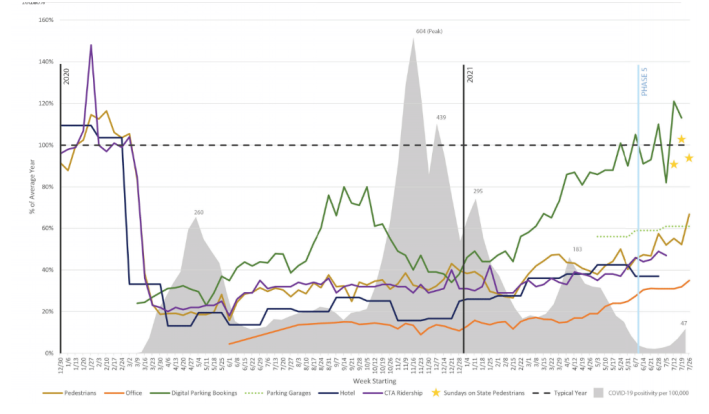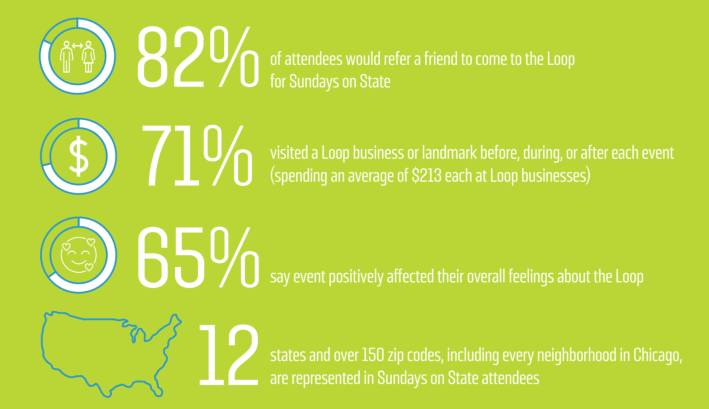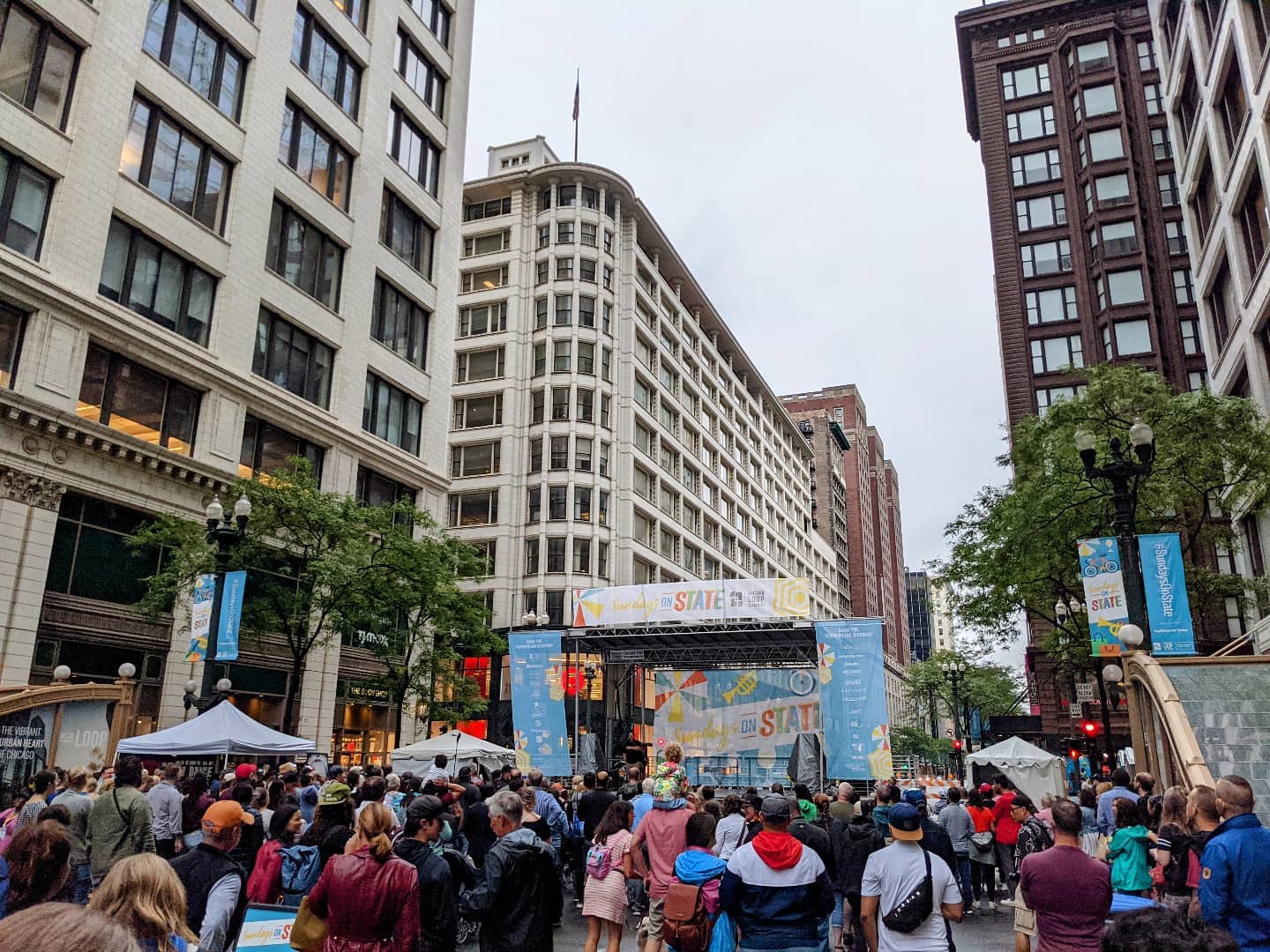The announcement at the top of this month’s recovery report from the Chicago Loop Alliance, which tracks pedestrian levels, transportation use and office and hotel occupancy, is a gradual return of life downtown. The Loop Alliance’s eighteen pedestrian counters situated along State Street from Wacker to Ida B. Wells logged over one million people per week on the street for the first time since the beginning of the pandemic.
The bump in pedestrian traffic was thanks in part to the Loop Alliance’s Sundays on State weekly block parties, which pedestrianize State Street from Lake to Madison streets (leaving Randolph and Washington open to through traffic) from 11 a.m. to 8 p.m. for live music and performances, fitness classes, kids’ activities and on-street cafe seating. The July recovery report chart, which plots metrics against a typical, non-pandemic year, is spangled with gold stars. Those indicate the dramatic spike in pedestrian counts – compared to the gold line below showing overall pedestrian activity – during Sundays on State, all clustered around the dotted line of normalcy.

According to Loop Alliance surveys, Sundays on State programming – last week’s lineup included performances by the Joffrey Ballet, Broadway in Chicago and local musician Jon Langford – has been a big draw for Chicagoans and tourists alike. Considering the popularity of the events, it would be great to see the Loop Alliance take the next logical step in future iterations and prohibit cross traffic on Washington and Randolph to create a true car-free street fair, as is common in other neighborhoods across the city during non-pandemic times.

Overall pedestrian activity in the Loop also rose steadily through the summer, in late July shooting up past 60 percent of an average year, by far the largest number of people seen downtown since early March of 2020. It’s safe to assume the August report numbers will continue to climb, reflecting spillover from Lollapalooza weekend.
Office occupancy also continued to rise slowly and steadily in July, but remained below 40 percent of normal. Hotel occupancy took a slight dip in June, but surely skyrocketed during Lollapalooza. Hotel and CTA data is reported a month behind, but CTA ridership appears to be tracking alongside the rise in pedestrian counts, a hopeful sign.
What remains not terribly hopeful is the volume of car parking in surface lots and other digitally booked spaces (as opposed to garages, which cater mostly to commuters) – indicated by the jagged green line which broke through the 100-percent-of-normal mark right around when the city entered Phase 5 and has continued to ascend into the stratosphere ever since. In July, digital parking hit a stomach-dropping 120 percent of average, pre-pandemic levels. It zagged down slightly – to around 115 percent – the last week of the report, but the overall trend here is not good.
As more people return downtown for work and recreation, city and transit agencies need to make serious investments in the convenience, safety, cleanliness, connectivity and public perception of CTA, Pace and Metra. Promises to expand and better connect the bike lane network need to be kept. Dedicated bus lanes (more than the one or two promised in CDOT’s strategic plan) need to be implemented. Driving, when a reasonable alternative exists, needs to be discouraged – financially.
In the comments of my story on last month’s Loop Alliance report, one reader suggested the problem will even itself out, that drivers will seek out public transportation when car congestion reaches the breaking point. If we haven’t hit that point, I’m afraid to see what that looks like.




